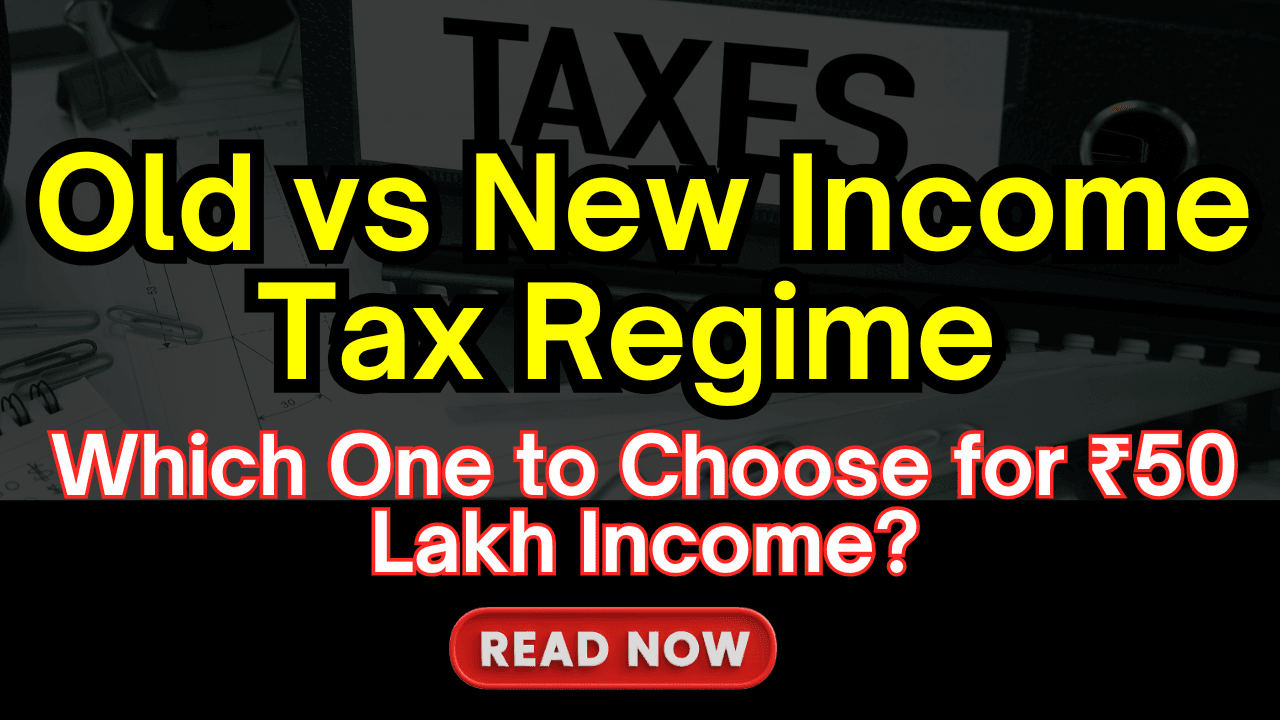Old vs New Income Tax Regime
Old vs New Income Tax Regime The Budget 2025 has introduced a significant relief for salaried individuals by raising the tax-free income limit to ₹12 lakh under the new income tax regime. However, if your annual income is ₹50 lakh, choosing between the old tax regime and the new tax regime can significantly impact your tax liability. Old vs New Income Tax Regime Understanding the pros and cons of both regimes is crucial for making an informed decision.
Old Tax Regime vs New Tax Regime: Key Differences
The primary difference between the two regimes lies in their tax rates and available deductions.
| Feature | Old Tax Regime | New Tax Regime |
| Deductions & Exemptions | Available (e.g., 80C, 80D, etc.) | Not available |
| Tax Rates | Higher rates with deductions | Lower rates without deductions |
| Ease of Filing | Requires detailed tax planning | Simpler with minimal documentation |
| Suitable For | Those claiming multiple deductions | Those with fewer investments or who prefer simplicity |
Example Case: Mr. X’s Income Analysis
Mr. X’s Annual Income: ₹50 lakh (FY 2024-25 / AY 2025-26)
Let’s compare Mr. X’s tax liability under both regimes.
Old Tax Regime Calculation
Under the old regime, taxpayers can claim various deductions to lower taxable income. Suppose Mr. X claims the following deductions:
- ₹50,000 under Section 80CCD(1B) for NPS
- ₹25,000 under Section 80D for health insurance premium
- ₹10,000 under Section 80TTA for savings bank interest
Total Deductions Claimed: ₹2,35,000
Taxable Income: ₹50,00,000 – ₹2,35,000 = ₹47,65,000
Using the old tax regime slabs, the total tax liability (including 4% health and education cess) amounts to ₹12,91,680.
New Tax Regime Calculation
Old vs New Income Tax Regime Under the new regime, no deductions are allowed, so Mr. X’s taxable income remains ₹50 lakh. However, the new regime offers lower tax rates.
The total tax liability under this regime (including 4% cess) amounts to ₹12,37,600.
Tax Savings Comparison
By choosing the New Tax Regime, Mr. X saves ₹54,080 compared to the Old Tax Regime.
| Criteria | Old Tax Regime | New Tax Regime |
| Gross Income | ₹50,00,000 | ₹50,00,000 |
| Deductions Claimed | ₹2,35,000 | Not Available |
| Taxable Income | ₹47,65,000 | ₹50,00,000 |
| Total Tax Liability | ₹12,91,680 | ₹12,37,600 |
| Tax Savings | – | ₹54,080 saved |
https://www.incometax.gov.in/iec/foportal/
Which Tax Regime Should You Choose?
Here are some key considerations when deciding between the two regimes:
- Choose the Old Tax Regime if:
✅ You actively invest in tax-saving schemes such as:
- Section 80C (LIC, PPF, ELSS, etc.)
- Section 80D (Health Insurance Premium)
- Section 24(b) (Home Loan Interest)
✅ You claim exemptions such as:
- House Rent Allowance (HRA)
- Leave Travel Allowance (LTA)
Best For: Individuals with multiple deductions and a well-planned investment strategy.
- Choose the New Tax Regime if:
✅ You prefer a simplified tax structure with minimal paperwork.
✅ You have fewer tax-saving investments.
✅ You want to avoid complex tax planning and prefer straightforward tax rates.
Best For: Individuals seeking ease of filing and those who don’t claim many deductions.
Conclusion
Choosing between the old and new tax regimes depends on your financial habits and investment strategy. Old vs New Income Tax Regime The Old Regime rewards disciplined investors with multiple deductions, while the New Regime simplifies tax filing and benefits individuals seeking a hassle-free process.
Before making a decision, carefully evaluate your total deductions and financial goals to select the tax regime that maximizes your savings. Old vs New Income Tax Regime If in doubt, consult with a tax professional to make the best choice for your unique financial situation.
For More Information : https://taxgyany.com/

